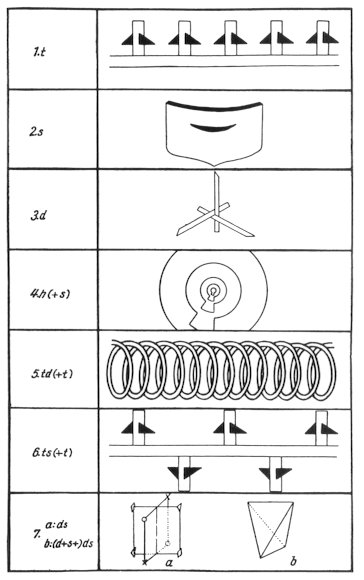|
2-- Symmetry A human body is symmetric, and there are extremely a large number of symmetrical shapes such as of insects, birds, fishes, shellfishes, and others creatures, and flowers, seeds, leaves, leaf preface and parts of other plants. In the natural phenomena, there are also many examples of symmetries from the well-known crystals of minerals and snow to molecules and atoms themselves. In nature, symmetries are found everywhere. There are too many examples of artificial products which have symmetries to point out. For example, symmetries are frequently seen in cloths, food, and houses. Especially, there are many symmetries the inside of "houses". There are also symmetrical shapes in furniture in the houses, shapes of stationeries, tableware, lights, electric appliances, various printed matters, and shapes of transportation systems such as trains, airplanes, and so on. We are enjoying dairy lives in an environment with pleasant feelings on the various shapes of natures and artificial designs. The tendency to hate the symmetries in the field
of the fine arts has been recently disappeared, and the symmetries are
frequently used when needed. In the field of the geometric arts, they are
very frequently used since these symmetrical structures matches with the
works. The symmetry is suitable to be used to express things with a feeling
of the unity, intellectual, ordered, solid and firm, solemn, mysterious,
and so on.
|
